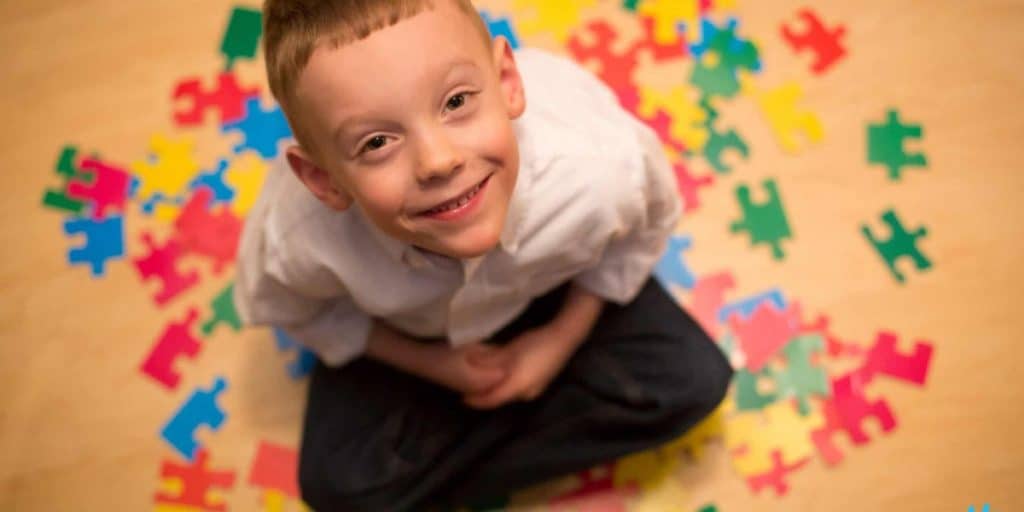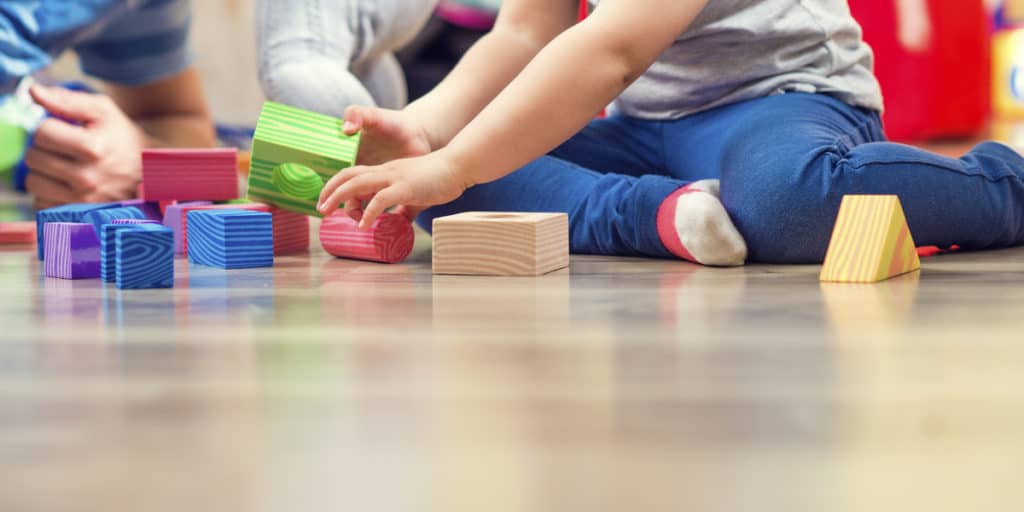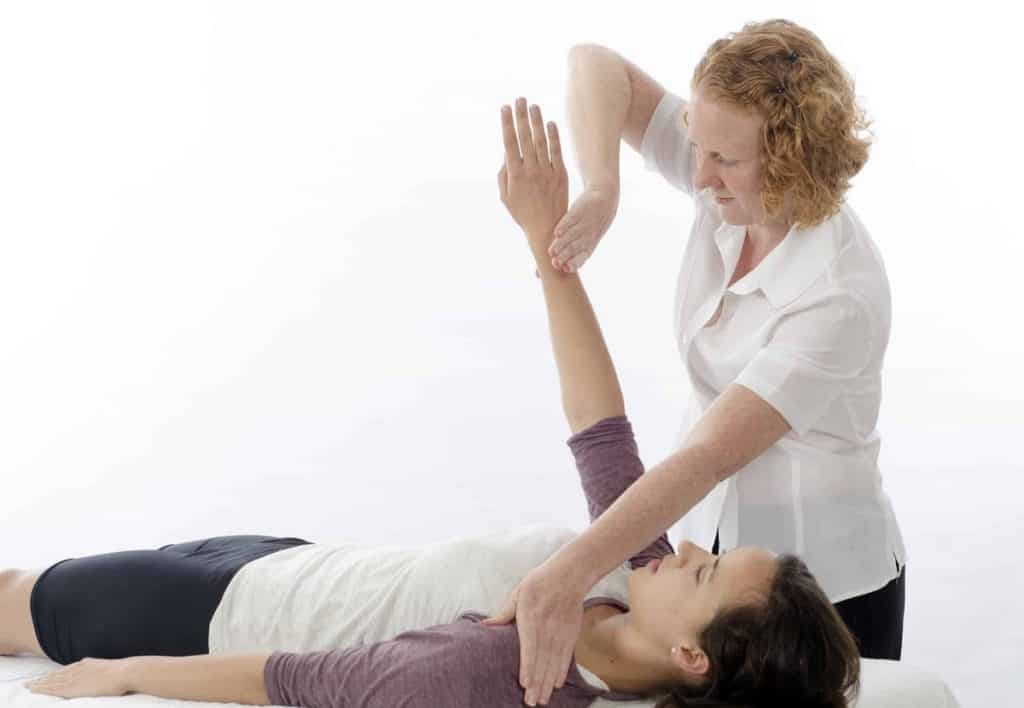She was no longer hyperactive and her skin became normal
Melissa, who was seven-years-old, had developed being hyperactive and restlessness along with eczema nine months before her mother brought her to us for evaluation and treatment. Testing by NTT revealed that she was suffering from allergy to water.
Her mother had installed a new water filtration system nine months ago. The water softener was the culprit causing her irritability and eczema. When she was successfully treated for the water, she was no longer hyperactive and her skin became normal.
One child diagnosed with autism every 20 minutes in the UAE
Statistics indicate that every 20 minutes, a child is diagnosed with autism in the UAE and one out of every 110 children is autistic, said an official.
This pervasive disorder affects tens of millions worldwide and the world is still struggling to fully understand this condition, which first appeared in the early 1900s.

What is ADHD?
Attention deficit hyperactivity disorder (ADHD) is a complex mental health disorder that can affect your child’s progress at school and their relationships. The symptoms of ADHD vary and are sometimes difficult to recognize.
Many of the individual symptoms of ADHD are normal for children to experience. Evaluating the child under several criteria is necessary to make a diagnosis of ADHD. ADHD is generally diagnosed in children by the time they’re teens. The average age of diagnosis is 7. Older children exhibiting these symptoms may have ADHD, but they often have exhibited rather elaborate symptoms early in life.
What is Hyperactivity in ADHD?

Hyperactivity is a state of being unusually or abnormally active. It is often difficult for people around the hyperactive person, such as teachers, employers, and parents. Hyperactive people often become anxious or depressed because of their condition and how people respond to them.
People who are hyperactive may develop other problems due to their inability to stay still or concentrate. For example, hyperactivity may lead to difficulties at school or work and may strain relationships with friends and family. It can lead to accidents and injuries, and it increases the risk of alcohol and drug abuse.
Hyperactivity has many different characteristics, including:
- constant movement
- aggressive behavior
- impulsive behavior
- being easily distracted
Common Symptoms of Hyperactivity/Impulsivity
Early Childhood (preschool and early school years)

- Behavior within normal range: The child runs in circles, does not stop to rest, may headbang into objects or people, and asks questions constantly.
- Behavior signaling a hyperactivity/impulsivity problem: The child frequently runs into people or knocks things down during play, gets injured frequently and does not want to sit for stories or games.
- Behavior signaling the possible presence of ADHD, hyperactive-impulsive type: The child runs through the house, jumps and climbs excessively on furniture, will not sit still to eat or be read to, and is often into things.
Middle Childhood (later primary grades through preteen years)
- Behavior within normal range: The child plays active games for long periods. He may occasionally do things impulsively, particularly when excited.
- Behavior signaling a hyperactivity/impulsivity problem: The child may butt into other children’s games, interrupt frequently and have problems completing chores.
- Behavior signaling the possible presence of ADHD, hyperactive-impulsive type: The child is often talking and interrupting, cannot sit still at mealtimes, is often fidgeting when watching television, makes noise that is disruptive, and grabs toys or other objects from others.
Adolescence

- Behavior within normal range: The adolescent engages in active social activities (eg: dancing) for long periods, and may engage in risky behaviors with peers.
- Behavior signaling a hyperactivity/impulsivity problem: He/She engages in “fooling around” that begins to annoy others, and he fidgets in class or while watching television.
- Behavior signaling the possible presence of ADHD, hyperactive-impulsive type: The adolescent is restless and fidgety while doing any and all quiet activities, interrupts and “bugs” other people, and gets into trouble frequently. Hyperactive symptoms decrease or are replaced with a sense of restlessness.
Causes
While the exact cause of attention-deficit/hyperactivity disorder is not clear, research efforts continue. Factors that may be involved in the development of ADHD include:
- Genetics. ADHD can run in families, and studies indicate that genes may play a role.
- Environment. Certain environmental factors, such as lead exposure, may increase risk.
- Development. Problems with the central nervous system at key moments in development may play a role.

Complications
Attention-deficit/hyperactivity disorder can make life difficult for children. Children with ADHD:
- Often struggle in the classroom, which can lead to academic failure and judgment by other children and adults
- Tend to have more accidents and injuries of all kinds than do children who don’t have ADHD
- Tend to have poor self-esteem
- Are more likely to have trouble interacting with and being accepted by peers and adults
- Are at increased risk of alcohol and drug abuse and other delinquent behavior
Coexisting conditions
ADHD doesn’t cause other psychological or developmental problems. However, children with ADHD are more likely than others to also have conditions such as:
- Learning disabilities, including problems with understanding and communicating
- Anxiety disorders, which may cause overwhelming worry, nervousness
- Depression, which frequently occurs in children with ADHD
- Disruptive mood dysregulation disorder, characterized by irritability and problems tolerating frustration
- Oppositional defiant disorder (ODD), generally defined as a pattern of negative, defiant and hostile behavior toward authority figures
- Conduct disorder, marked by antisocial behavior such as stealing, fighting, destroying property, and harming people or animals
- Bipolar disorder, which includes depression as well as manic behavior
- Tourette syndrome, a neurological disorder characterized by repetitive muscle or vocal tics
Key Takeaways
- Talking to your child’s teacher and a doctor is a good first step to getting your child the support he needs.
- Hyperactivity is a sign of a medical condition, not the result of bad parenting.
- Giving a fidgety child a ball or some putty to squeeze can help him concentrate.
The following are 10 ways parents can help reduce hyperactivity

- Good breakfast – If your child’s teacher complains that he is frequently disrupting the class by fidgeting or getting up from his seat, start your child off with a good, healthy breakfast. Hunger and blood sugar peaks and valleys can make a child more hyperactive.
- Teach deep breathing/yoga/tai chi/meditation – While many of the strategies are things a parent can do to help their child, it is also important to teach your child methods for self-regulation. Deep breathing exercises, yoga, tai chi or meditation all help a child learn to slow down their thoughts and their bodies. Work with a professional if you aren’t sure how to teach your child these different methods of relaxation.
- Take a walk – For moments of high activity at home, taking a walk outside can help your child calm down. Being outside and regular exercise has both been shown to reduce ADHD symptoms. If your child is still young, plan a daily walk around the block into your routine. If he is older, have him take a short walk outside before settling down to do homework or another quiet time activity.
- Use a boredom box – Hyperactivity zooms when boredom sets in. Create a box of activities geared toward your child’s interests. The box might contain dress-up clothes, art supplies, Legos, models or whatever activity tends to hold your child’s interest. To keep the box interesting and novel, switch items once in a while and once he has lost interest, put the box away until it is needed again.
- Routine and structure – Make sure your days, even on weekends and vacations, follow a routine. Children with ADHD thrive in structured environments when they know what to expect. Plan in transitional time to help your child move from one activity to another
- Use music – Soothing music, such as classical music, can help some children calm down. Experiment with different types of music to find out what works for your child. Use music in the background for times when activity levels should be low, such as homework time, dinner time or before bedtime.
- Create a quiet time area – Create a space in your house for your child to retreat to during “quiet time.” You could use a bean bag share and have plenty of books, puzzles and coloring books to keep your child busy and quiet.
- Exercise every day – Add exercise to your child’s daily routine. Making sure your child gets at least 20 minutes of exercise each day can help reduce ADHD symptoms all day – and reduce depression and anxiety symptoms. Even during the cold winter months or on rainy days, try to find indoor exercises for your child – many of the video games have an exercise game to help your child keep moving and entertained.
- Stay calm yourself – Children react to your reaction. If you get upset, frustrated or angry, their hyperactivity levels may increase. Take a few deep breaths, go into the other room, and take a short break if you need one. Staying calm and reacting with a neutral voice will help your child remain calm.
- Provide fidget alternatives – For children who seem eternally restless or must fidget whenever they are trying to sit still, provide fidgeting alternatives to help them release energy and keep moving without disturbing others. Your child might sit still for longer periods of time if he has a stress ball or other object in his hand he can manipulate. Chewing gum may also help (but usually isn’t allowed in school.)

While hyperactivity can cause inappropriate behavior in some situations, remember, hyperactivity is also seen as a positive trait. Many adults with ADHD appreciate their endless energy and feel they are able to accomplish much more than those without hyperactivity. Help your children learn to harness the excessive energy and use it to help them accomplish their goals.
NAET and Allergy-Related ADHD / ADD
Now we have NAET treatment, which helped many children with allergy-related ADHD/ADD. Sometimes, the only sign of allergy is that they continuously ask for the same foods over and over.
There are many causes of Autism, ADD/ADHD as well as other behavioral problems; among the causes are allergies to artificial food colorings, food additives, chemicals, radiation, vaccinations, and other food allergies, with NAET, these children can be treated for them and possibly lead a normal life.
NAET uses Muscle Response Testing technique (MRT), which allows us to know if a child is holding on to repressed emotions or is reacting to foods, clothing, radiation, or something in his environment. With each test, we can eliminate the chemical sensitivity, allergies that hinders the flow of energy thus restoring the body to function normally.

The NAET Treatment Procedure
Step 1 – Isolate the offending allergen using NTT (Nambudripad’s Testing Techniques: Muscle response testing, and/or non-invasive skin resistant testing, also encourages the use of standardized laboratory testing like RAST, Eliza act, etc.)
Step 2 – Mild acupressure on specific pre-determined acupuncture points by the practitioner on the specific meridians
Step 3 – Complete avoidance of the treated allergen for 25 hours following the treatment.
After 25 hours the practitioner needs to retest the treated allergen for the completeness of the treatment. In most cases, it takes one treatment (one office visit) to eliminate the allergy if the treatment is administered properly, and 25 hour – avoidance is followed. In some extreme cases, it may take more than one office visit per item.
How does NAET work
NAET can remove the adverse effect of any allergic food in the body including all the above-listed food products, and create homeostasis in the body in the presence of the offending allergen (without avoiding for life). During the NAET treatment, your brain will create a new friendly memory towards the allergen and will imprint and store it in the memory bank.
During the process, the old memory of the allergen’s adverse effect is erased or forgotten. After completion of the NAET treatment, the allergen becomes non-allergen and an irritant becomes non-irritant to your energy field and the body will learn to relax naturally in the presence of the new friendly substance.
After clearing for the Autism Protocol, he was no longer hyperactive!!!
People with an irritable nervous system(ADHD and children with other brain disorders) use up essential fatty acid rapidly. So this deficiency is quite common in ADHD patients and often requires supplementation with good fatty acid after clearing the allergy.
Moran, fourteen-years-old, suffered from attention deficit disorders since childhood. He also suffered from severe painful acne and dry skin. He was taking medication to reduce his ADHD since the age of hour. He was found to be allergic to all the basic 18 groups of foods.
When he completed the treatment for Vitamin A, his hyperactivity reduce slightly. But he continued to have acne and boils on his face. When he was treated for fats, his acne and dry skin improve. After clearing for the basic groups, he was no longer hyperactive and functioned normally in school and home.
Connect with us through our Facebook page at www.facebook.com/NAETDubai or visit: www.naetdubai.com. You will find a wealth of information here along with an opportunity to speak confidentially through WhatsApp 056-639 0197 or Phone Call 04-420 1633.
You may also email us at admin@naetdubai.com




16 Responses
Hi Thank you 🙂 . Please don’t forget to subscribe to our blog and you will receive mails once we published new blogs.
Hi, that is an awesome comment! We are glad you found it helpful. Please don’t forget to subscribe to our blog and you will receive mails once we published new blogs.
Thank you 🙂 Please don’t forget to subscribe to our blog and you will receive mails once we published new blogs.
I used to be able to find good information from your content.
I’m not that much of a internet reader to be honest
but your sites really nice, keep it up! I’ll go ahead and bookmark
your site to come back later on. Many thanks
Thank you so much for your comment. Please don’t forget to subscribe to our blogs. Feel free to contact us if you need any further information.
Hello my family member! I want to say that this post is awesome, great written and include almost all vital infos. I would like to look more posts like this .
Very nice post. I just stumbled upon your blog and wanted to say that I have truly enjoyed surfing around your blog
posts. After all I will be subscribing to your rss feed and I hope you write
again very soon!
I don’t even know how I ended up here, but I thought this post was good.
I do not know who you are but definitely you’re going to a famous blogger if you aren’t already 😉 Cheers!
Excellent post. I’m experiencing many of these issues as well..
Hi, I do believe this is an excellent web site. I stumbledupon it 😉 I am going to return once again since i have bookmarked it.
Money and freedom is the greatest way to change, may you be rich and continue to help others.
I like looking through an article that can make people think.
Also, many thanks for permitting me to comment!
Hi, just wanted to tell you, I loved this article.
It was helpful. Keep on posting!
Hi to every body, it’s my first visit of this web site; this
web site consists of amazing and truly excellent information in favor of
readers.
Pretty nice post. I just stumbled upon your weblog and
wished to say that I’ve truly enjoyed surfing around your blog
posts. In any case I’ll be subscribing to your rss feed
and I hope you write again soon!